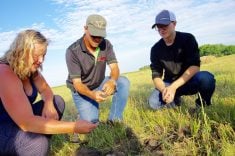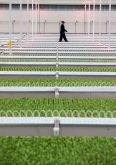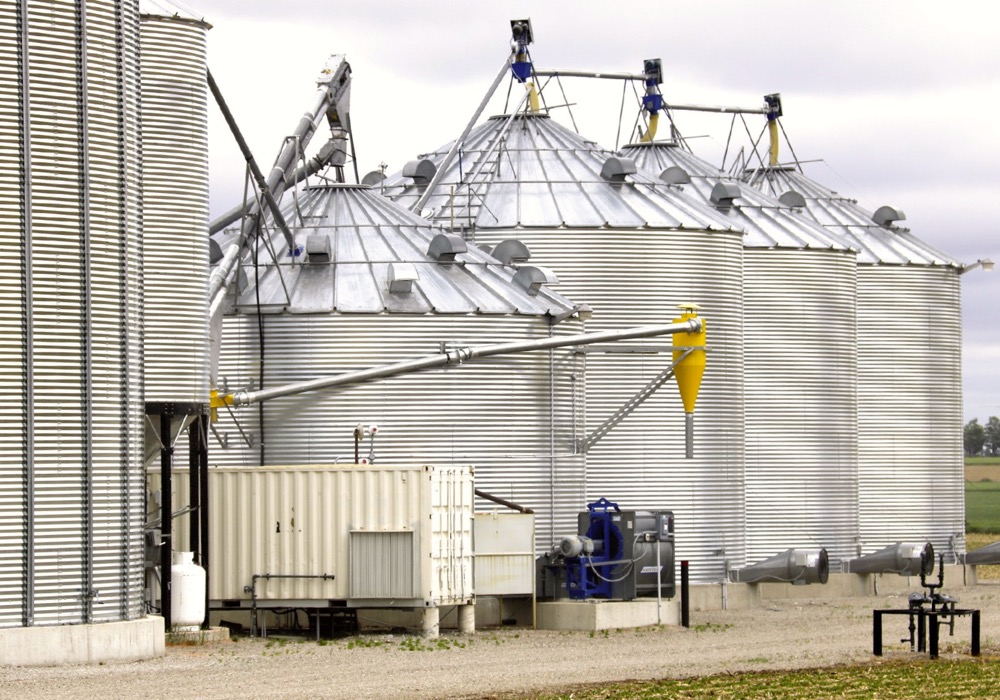The agri-food sector is under increased pressure to prove sustainable production practices from the farm to the corporate level.
For the first time, sustainability and environmental concerns made the top five consumer issues in the Canadian Centre for Food Integrity’s 2021 Public Trust research publication.
Sustainability is becoming part of value systems. Still, it’s difficult for agri-food customers and consumers to know whether the Canadian food system is heading in the right direction, said McCaughey, head of technical services and digital agriculture for Syngenta.
Read Also

New Iridium technology helps block GPS spoofing
A tiny new chip will allow Iridium’s Positioning, Navigation and Timing (PNT) signals to be received much smaller devices, create a backstop against Global Positioning Systems (GPS) spoofing.
Why it matters: Major capital market sectors such as banks and pension funds are now incorporating Environmental, Social and Governance (ESG) factors into their decision-making.
“There is increasing demands to demonstrate sustainability coming from government structures,” McCaughey said during a virtual agri-food sustainability panel hosted by Syngenta.
“It’s first and foremost consumers, but also this element from a governmental side of things as we work to achieve some of the objectives (Canada’s) put forward in both the domestic and a global perspective.”
Canada has committed to reducing greenhouse gases (GHGs) by 40 to 45 per cent below 2005 levels over the next eight years. It will require different sectors to participate and partner, including the agri-food chain from the farm to the corporate level.
“Doing nothing is not an option. Doing nothing costs businesses and farmers significantly,” said Daniel Metherington, McCain’s vice-president of agriculture for North America. “But choosing sustainability has to be sustainable, and that goes for the financials as well.”
He said short-term one- or two-year gimmicks won’t move the needle. The industry needs 10- to 15-year strategies with built-in incentives for growers to invest in new technology, practices and innovation to improve their output and bottom line.
“What we’ve got to be careful of is we don’t add more work to our farmers. This could create a huge amount of red tape if we end up with 15 to 20 different audits for individual customers and individual supply chains,” said Metherington.
He said agri-food producers and processors must scrutinize their whole supply chain to ensure manufacturing facilities and corporate headquarters uphold pledges to decrease their carbon footprint and build sustainability beyond a carbon credit approach.
Carbon credits can be used effectively in the short-term to achieve long-term adoption of carbon neutrality practices, Metherington said, primarily when reinvesting offsets into on-farm initiatives that reward sustainability.
General Mills has focused on carbon insets, defining roadmaps and strategies to hit science-based public targets across all three areas of their enterprise footprint, said Jay Watson, Global Impact Team initiative lead for regenerative agriculture.
For General Mills, agriculture is its most significant driver.
“We could have chosen to have a net-zero commitment by itself and then use carbon credits just to offset (it),” he said. “But it’s good business sense and rationale for us to go and work in (decarbonizing) agriculture because if we have a more resilient agri-food system, we’re going to have a more resilient business.”
Carbon insetting reduces emissions while driving business value by using organization investments to promote sustainable practices and reduce the carbon footprint within the company’s value chain.
This type of incentive and support can connect growers to capital from the company, facilitating the adoption of necessary practices sooner. However, it may take time to incorporate farm practices adopted today into a benefit that can be reaped.
“I think we’re getting carbon tunnel vision,” said Watson. “We have to make sure we’re looking after communities and farm profitability and biodiversity and water resources.”
A holistic approach to investment based on intellectual and social capital and the social network needed to move supply chains forward through learning and experience is best, said Watson.
“If you can create change agents in these communities, they can create a ripple effect, but they have to first generate the know-how,” he said. “And how do we enable them to generate the know-how for a more sustainable regenerative system? Investment.”
The return on investment isn’t as evident with social investment metrics and shouldn’t replace decisions around funding or capital, but it could complement the traditional approach, he said.
As the market evolves and attracts increased participation, Watson hopes there will be opportunities to stack payments for multiple benefits created by producers.
Agri-food business innovative programs, like McCain’s Farm of the Future initiative, developed alongside farmers, could highlight leading-edge technology, practices and equipment to assist uptake and shoulder some of the farmer’s risk.
Farms of the Future in New Brunswick, the first of McCain’s three global sites, demonstrates current and future on-farm practices as a tool to engage agri-food stakeholders, including all levels of government, customers and McCain employees.
“There’s going to be market pressure start to build for regions that are excelling with sustainability,” said Metherington. “It becomes a different selling point for any given region, either within a country or different countries competing for export volume.”
Regions that excel in sustainability can leverage that to add value to their product and set themselves apart for a standard commodity, he said.
“Consumers, government, customers, investors — the interest, and increasingly more so the demands, for disclosure are coming from many of those groups,” said Watson.
The onus is on the industry to ensure data and documentation demonstrate their actions and provide a roadmap and a destination point to stakeholders to garner conversations on partnerships.
Without a commitment from the producer, there are no sustainability or soil health regenerative strategies. Watson said keeping the producer’s voice front and centre and ensuring a broad-based community of stakeholders is critical.
“I’m encouraged. I think we have lots of opportunities (and) momentum that we’re building on,” Watson said. “The future is bright, but we need to make sure we’re telling those (farm) stories along the way and that we have the data and the science to be able to support it.”















